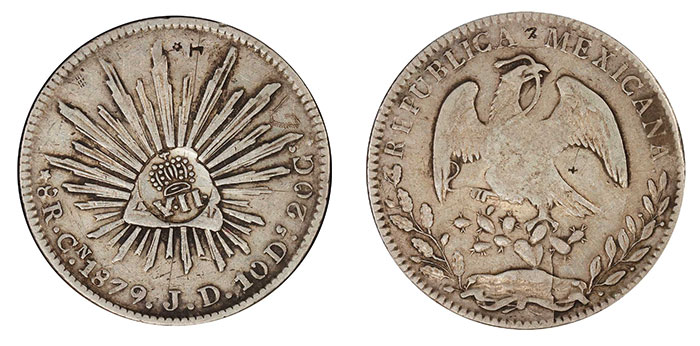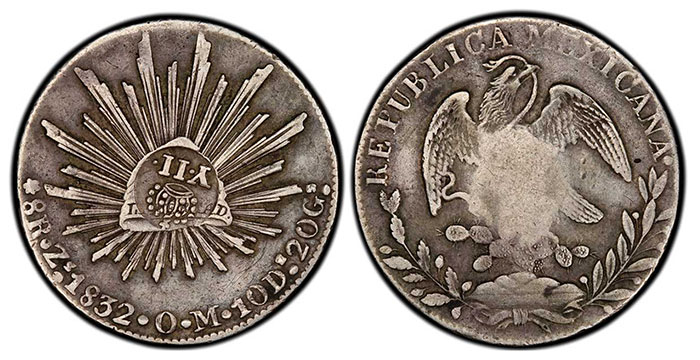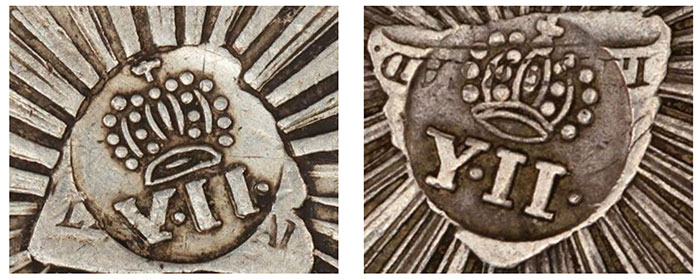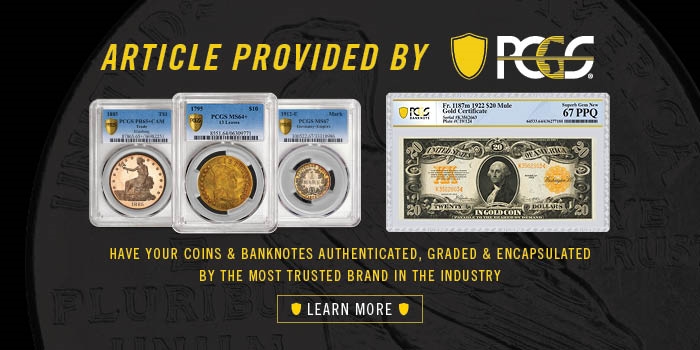
By Jay Turner for PCGS ……
There are many counterfeits and altered coins that unfortunately often defraud people in pursuit of building their collection or looking for arbitrage. With a little commonsense, many of these pieces can be easily detected and avoided.
When Spain lost its empire in the Americas, one of the overseas territories that it retained was the Philippines. A crucial area for trade between Asia, the Americas, and Europe, the Spanish Philippines played a vital economic point for Spain and its newly liberated colonial territories that now operated as independent countries. These new nations continued mining silver and produced coinage that was a vital part of the trade with Asia. By decree, the government of Spain required that these new coins from new countries be authorized for use in the Philippines with, at first, an overstrike until the dies failed, and then a counterstamp with “F.7.o.” or “Y.II.” for either Ferdinand VII or Queen Isabela II, depending on the reigning monarch at the time.

The Spanish Philippines countermarked coinage has been a popular collecting area for the diversity of the coinage that can be found with these countermarks. In recent years with new books, major collection sales, and new studies, the area has been incredibly hot, with each sale seeming to bring new record prices. While counterfeits relating to this series are nothing new, several well-done counterfeit counterstamps have been applied, and attempts to certify these coins and offer them for public sale have occurred.
The coin featured here is a Philippines “Y.II.”-type stamp applied onto a Mexico Cap and Rays 8 Reales. Without knowing the series, this coin could fool many people; there are, however, many easy commonsense tells on the coin.
First, looking at the stamp, the design is wrong — most notably on the “Y”, which looks more like a “V”. These dies are not genuine for what was applied to coins in the Philippines and this stamp is documented as counterfeit.
Yet, the easiest way to distinguish this coin as counterfeit is the date.

The “Y.II.” stamps were applied by Decree of December 20, 1834, and ended up being applied on March 31, 1837, by Decree of February 1, 1836. For genuine examples of the “Y.II.” counterstamp, the date range would be (1834-1837), and this fake stamp is applied to an 8 reales dated 1879. By simply looking at the date range of genuine examples and the date of the host coin, the authenticity is no longer in question.
* * *






The article should include a full photo of the fake.